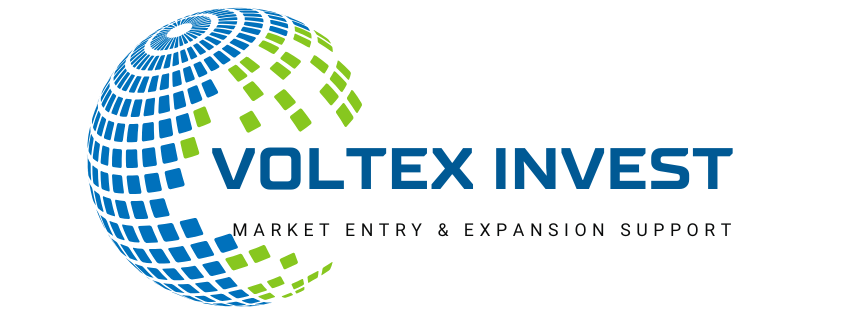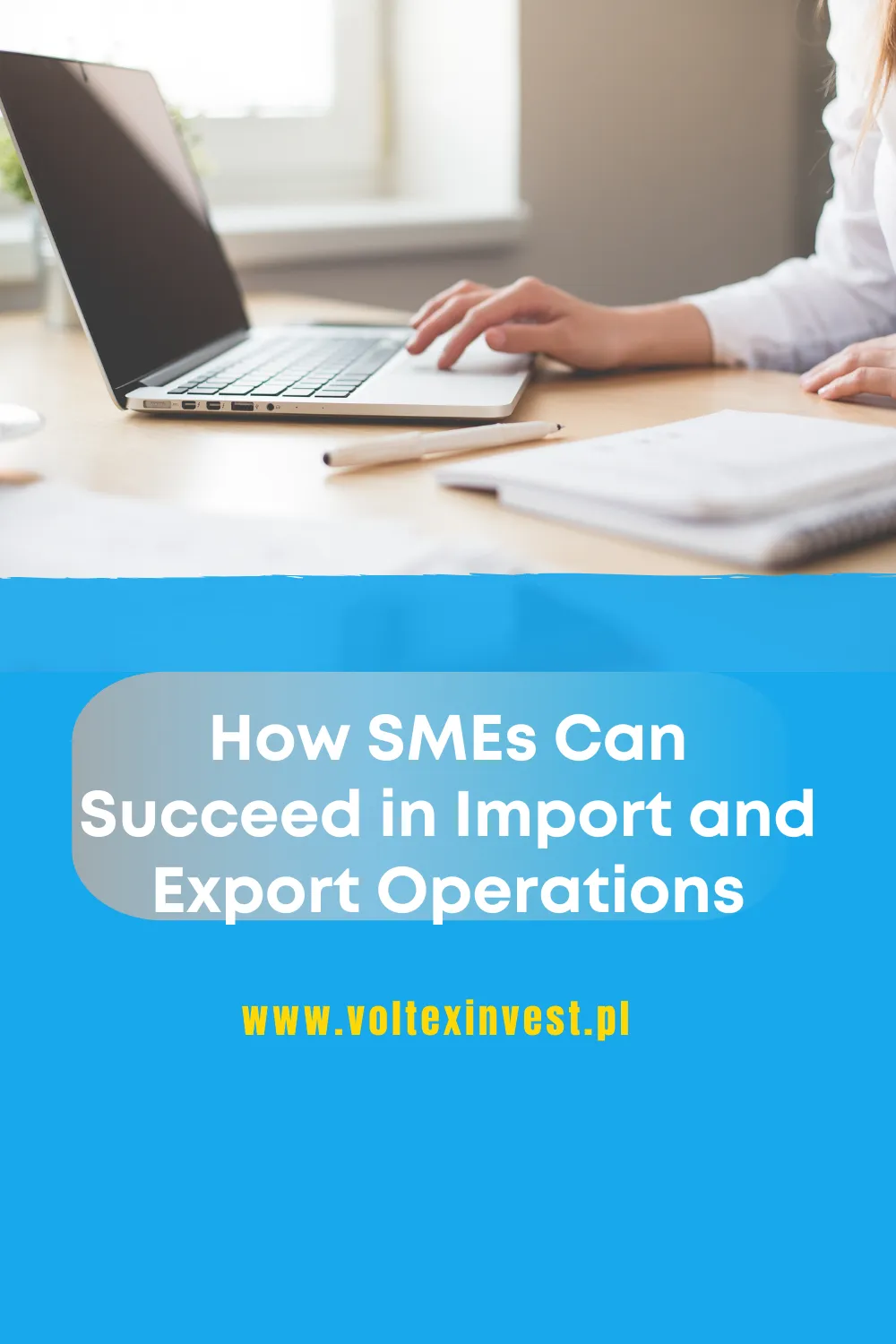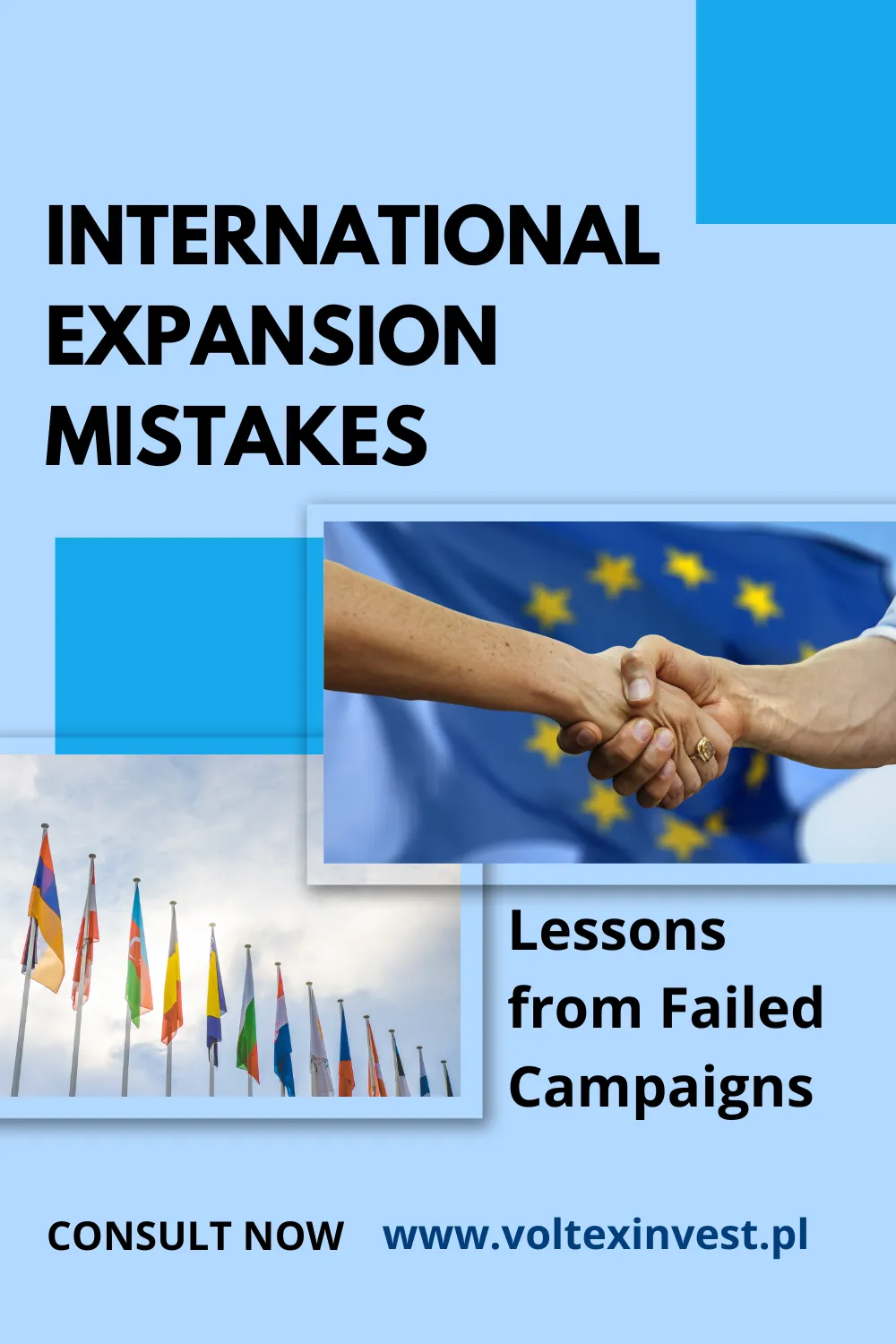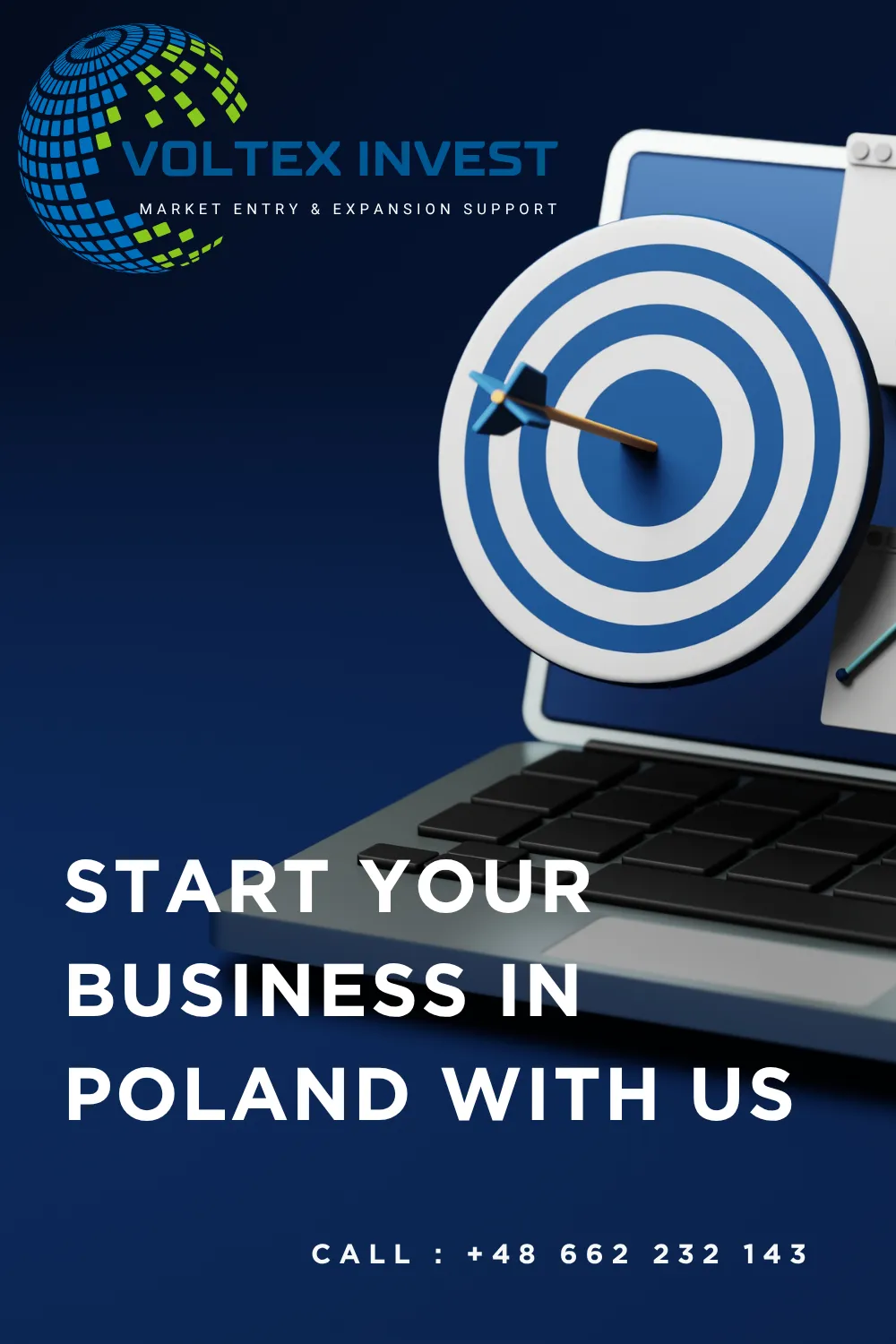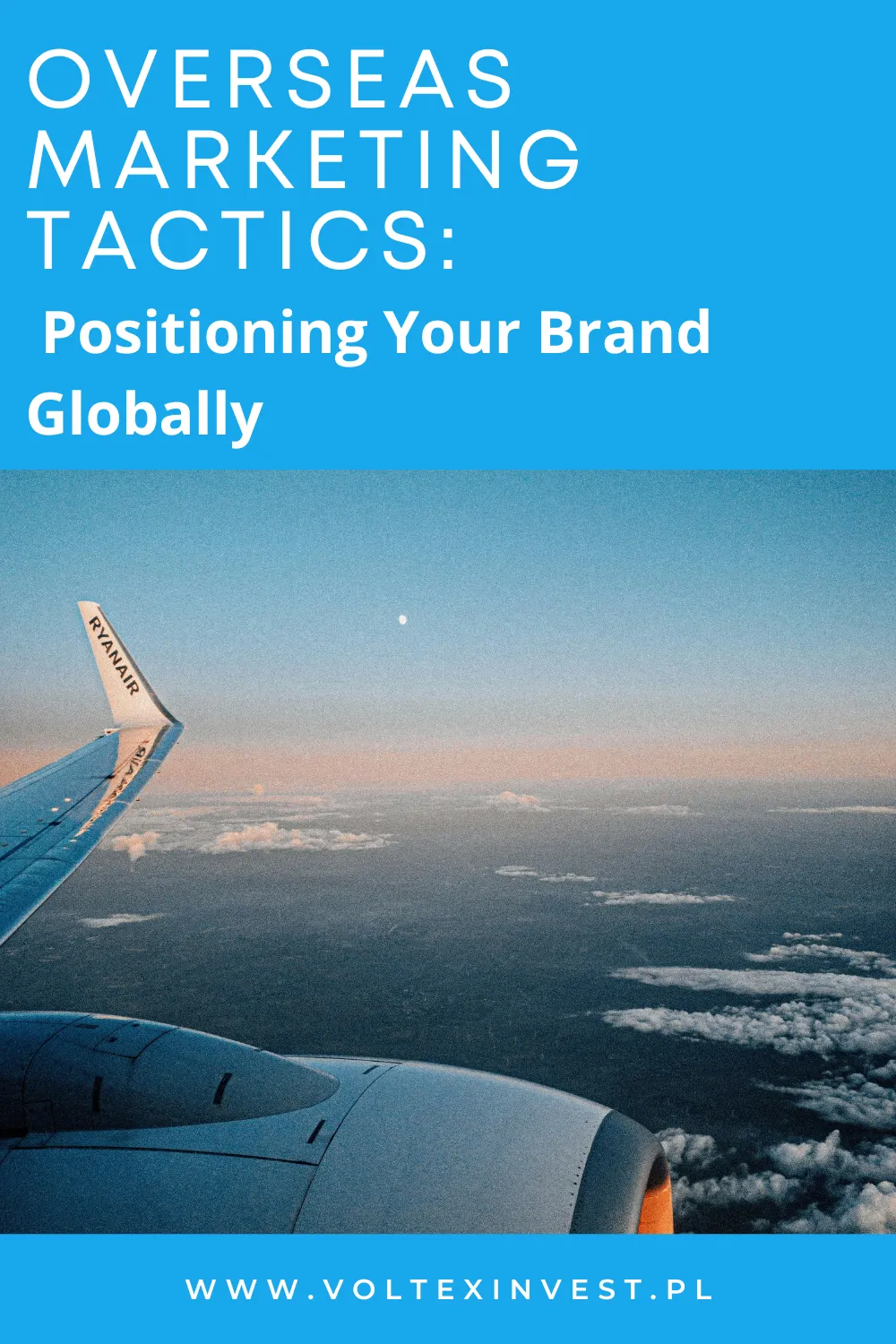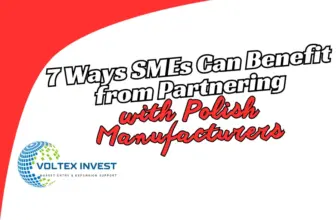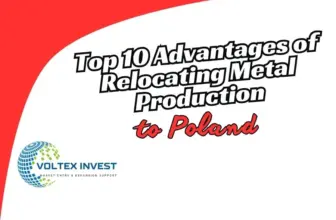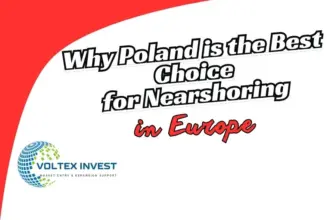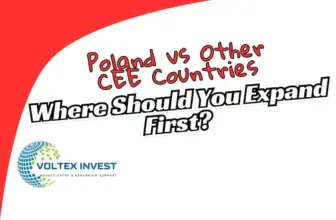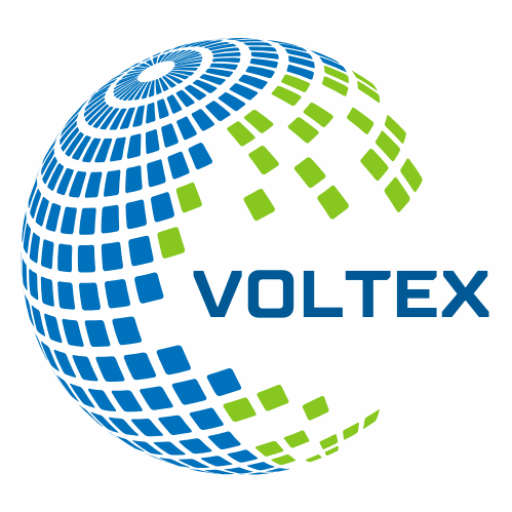A Quick Guide for Companies Exporting to the EU in 2025. Global Trade in Practice with Voltex Invest.
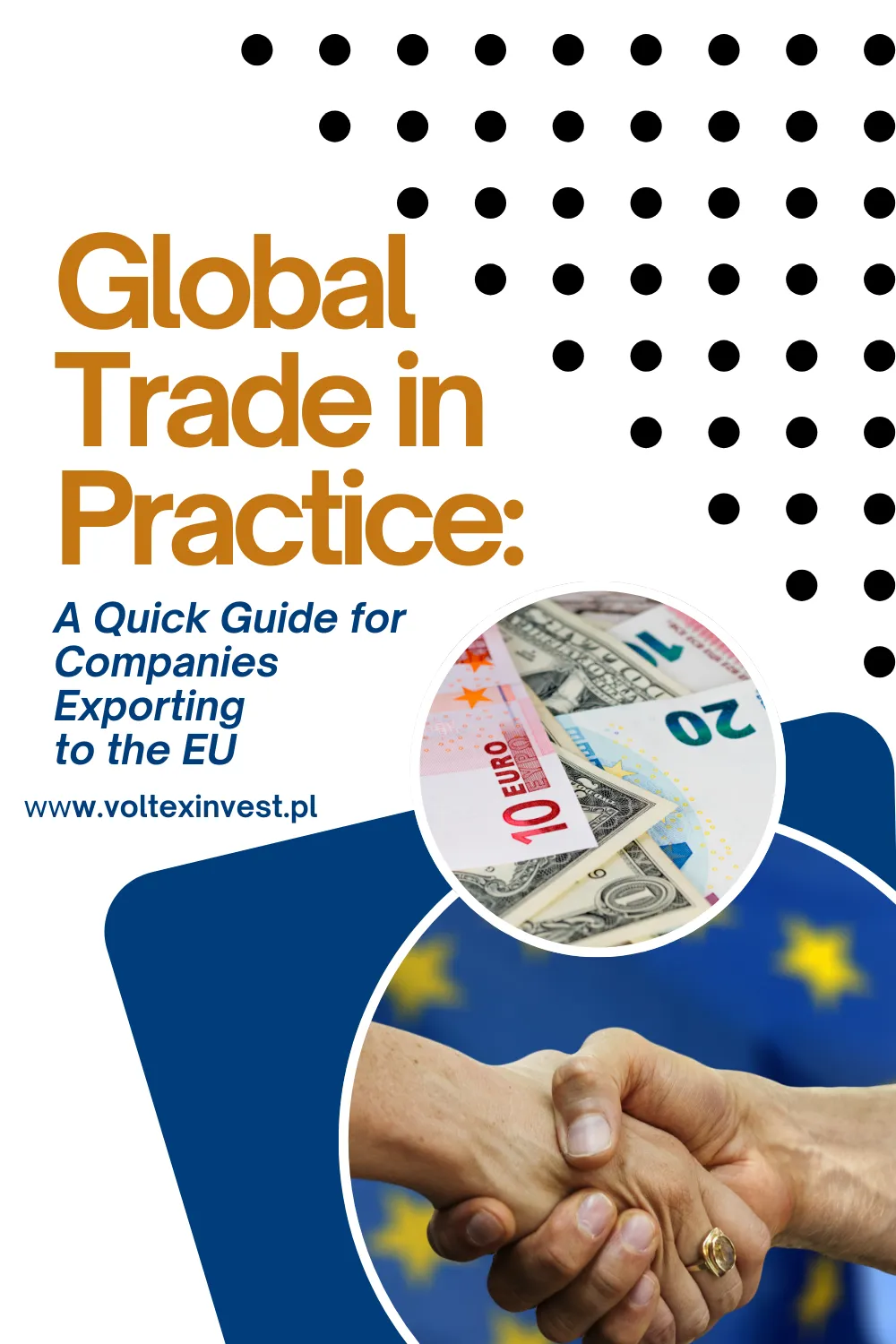
Entering the European Union (EU) market presents a vast opportunity for companies around the globe. With over 447 million consumers, stable regulatory frameworks, and robust purchasing power, the EU is one of the most attractive markets for exporters. However, navigating the complex regulatory environment, customs procedures, and market standards requires in-depth knowledge and strategic planning.
This expert guide provides a practical overview for companies planning to export to the EU in 2025, with actionable insights, updated rules, and support recommendations—highlighting the vital role of professional market advisors like Voltex Invest in facilitating a smooth entry into both the Polish and broader EU markets.
Guide for Companies Exporting to the EU in 2025
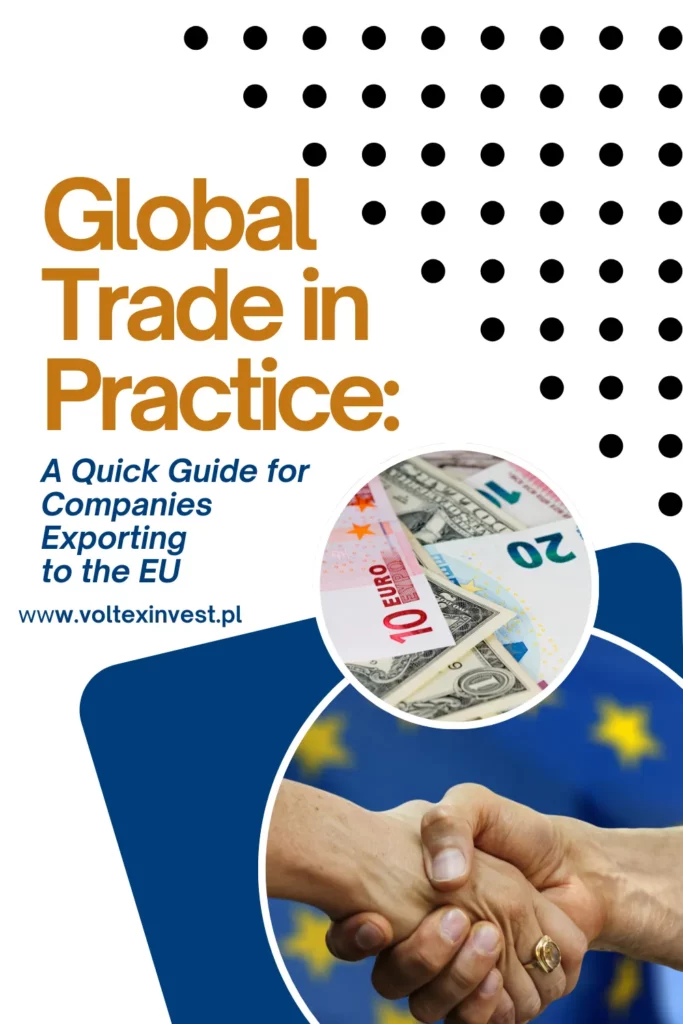
Why Export to the EU in 2025?
In 2025, the EU remains one of the largest economic blocs in the world, characterized by:
- Unified Trade Regulations: The EU’s single market enables access to all 27 member countries through a harmonized regulatory system.
- Stable Business Environment: Political and economic stability, strict rule of law, and protective consumer rights offer exporters long-term security.
- Strong Demand for Quality Products: From machinery and tech solutions to sustainable goods and food products, the EU market rewards quality and compliance.
Moreover, consumer preferences are increasingly shifting towards sustainable, transparent, and ethically sourced products—a challenge and opportunity for exporters aiming to build trust and brand reputation.
Step-by-Step Guide to Exporting to the EU
To succeed in the EU market in 2025, exporters must adopt a structured and informed approach. Below is a breakdown of the essential steps:
1. Understand EU Regulations and Market Requirements
Exporting to the EU requires full compliance with:
- CE Marking Requirements: Applies to products such as electronics, machinery, toys, and medical devices.
- REACH Regulation: Covers the safe use of chemicals and obligations for registration, evaluation, and authorization.
- Food Safety Standards: The EU follows strict sanitary and phytosanitary (SPS) measures—especially important for agrifood exporters.
- Eco-Design and Energy Labeling: Required for many appliances and electronics sold in the EU.
In 2025, sustainability regulations are more stringent than ever. The Corporate Sustainability Reporting Directive (CSRD) and Carbon Border Adjustment Mechanism (CBAM) are now in full effect, impacting exporters’ obligations for transparency and environmental reporting.
???? Pro Tip: Partner with experienced regulatory consultants to perform a compliance gap analysis before exporting.
2. Identify Your Target Market Within the EU
Although the EU operates as a single market, each member country has distinct cultural preferences, business practices, and legal nuances.
Start by conducting a market segmentation analysis to identify:
- Demand trends in different countries (e.g., Germany’s demand for industrial machinery vs. France’s interest in eco-foods).
- Local competition and pricing benchmarks.
- Language and cultural expectations for packaging, marketing, and customer service.
???????? For instance, Poland—one of the EU’s fastest-growing economies—offers a prime entry point for Eastern and Central Europe. It’s also an ideal test market due to its expanding middle class and pro-business policies.
✅ Voltex Invest, a professional market entry advisor, specializes in helping foreign companies navigate Polish regulations, set up operations, and scale into the broader EU market.
3. Choose the Right Trade Model
Your route to market depends on your industry, target customer, and export volume. Common models include:
- Direct Exporting: Selling directly to EU buyers via online channels or through your own sales force.
- Indirect Exporting: Working with local distributors, agents, or wholesalers.
- Joint Ventures or Partnerships: Collaborating with local companies for production, sales, or distribution.
- Establishing a Local Presence: Setting up a branch office, subsidiary, or manufacturing plant within the EU.
Each method comes with legal, tax, and operational implications. For example, setting up a subsidiary in Poland gives access to local grants and EU funding but requires adherence to local corporate laws.
???? Expert Tip: Use market entry advisors like Voltex Invest to assess feasibility, establish contacts with reliable partners, and manage risks.
4. Prepare the Necessary Export Documentation
To ensure a seamless entry into the EU, exporters must prepare the following documents:
- Commercial Invoice
- Packing List
- Certificate of Origin
- EUR.1 Movement Certificate (for preferential tariff access under trade agreements)
- Product Compliance Declarations (e.g., CE conformity)
- Transport and Insurance Documents
???? In 2025, electronic customs procedures are the norm across the EU. Exporters must register with the Registered Exporter System (REX) for simplified declarations and duty preferences.
5. Comply With EU Customs and Tariff Rules
The EU applies a Common External Tariff (CET) for goods coming from outside the bloc. However, free trade agreements (FTAs) between the EU and many countries (e.g., Japan, Canada, UK, Vietnam) offer reduced or zero tariffs for qualifying goods.
Make sure to:
- Determine HS codes correctly.
- Calculate duties and VAT applicable upon importation.
- Check if your product qualifies for preferential treatment under FTA rules of origin.
???? CBAM Alert: Starting in 2025, importers of cement, aluminum, fertilizers, iron, and steel must report embedded carbon emissions and may face additional charges.
6. Focus on EU E-commerce and Digital Compliance
The EU Digital Services Act (DSA) and Digital Markets Act (DMA) regulate online platforms, digital advertising, and consumer protection.
If you plan to sell online:
- Ensure compliance with GDPR for data protection.
- Provide clear terms of service, refund policies, and customer support in local languages.
- Respect cross-border VAT rules (OSS system).
With e-commerce booming in the EU, exporters should also invest in localized SEO, content marketing, and trusted payment gateways (e.g., Klarna, iDEAL).
7. Build Strong Local Partnerships and Distribution Channels
Having the right local contacts is key to success. This includes:
- Importers and distributors
- Customs brokers
- Logistics and warehousing providers
- Legal and accounting firms
???? Working with a knowledgeable trade advisor like Voltex Invest gives you access to a curated network of verified partners in Poland and across the EU, reducing your time to market and risk of failure.
Why Choose Voltex Invest for Market Entry Support?
Voltex Invest is a professional advisory firm specializing in helping global companies enter and expand in the Polish and European Union markets. With a hands-on approach and in-depth local knowledge, they offer:
- Regulatory and legal consulting for EU compliance
- Market research and competitor analysis
- Company formation and legal representation in Poland
- B2B matchmaking and partnership development
- Logistics, tax, and customs planning
- Post-entry support and scaling strategies
Whether you’re exporting high-tech goods, consumer products, or services, Voltex Invest ensures you have a strategic foothold in the heart of Europe.
???? Contact Voltex Invest today to schedule a free consultation and start building your EU export strategy.
Conclusion: Your Roadmap to EU Success in 2025
The EU market in 2025 is as promising as it is complex. Companies that take the time to understand compliance rules, cultural nuances, and optimal trade routes are far more likely to succeed.
Here’s a quick recap of what you need to do:
✅ Research EU-wide and country-specific regulations
✅ Identify your ideal target market and entry model
✅ Prepare all export and customs documentation
✅ Adapt your marketing and operations to local expectations
✅ Seek professional support to streamline your market entry
Don’t leave your EU expansion to chance. Partner with professionals who understand the market inside and out—like Voltex Invest—and make your export journey smoother, faster, and more profitable.
Frequently Asked Questions (FAQ)
Do I need to register my company in the EU to export?
No, but having a local representative or branch can simplify customs, compliance, and tax matters.
What industries are best positioned for EU export growth in 2025?
Green tech, digital solutions, agrifood, pharmaceuticals, and sustainable consumer products are all high-growth sectors.
Can I sell to multiple EU countries through one distributor?
Yes, many distributors operate regionally or pan-EU, but legal contracts should clearly define territories and responsibilities.
How long does it take to enter the EU market?
It varies—typically 3 to 12 months depending on product type, compliance needs, and your market entry strategy.
How can I find buyers in the EU?
Trade shows, online B2B platforms, and market consultants like Voltex Invest can connect you with verified buyers.
